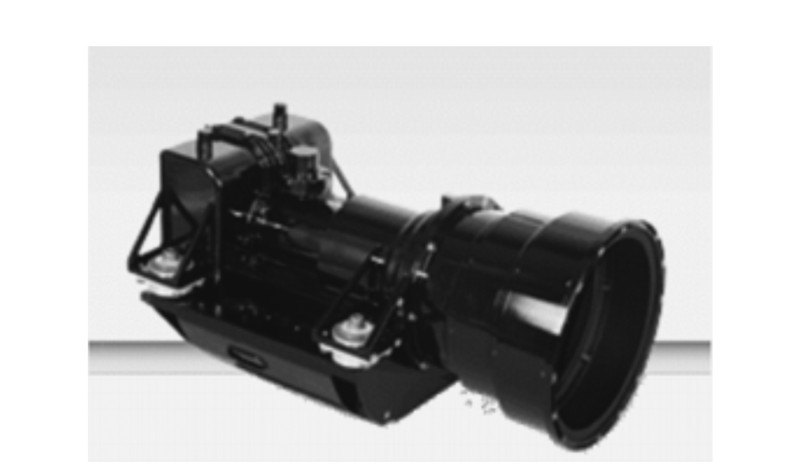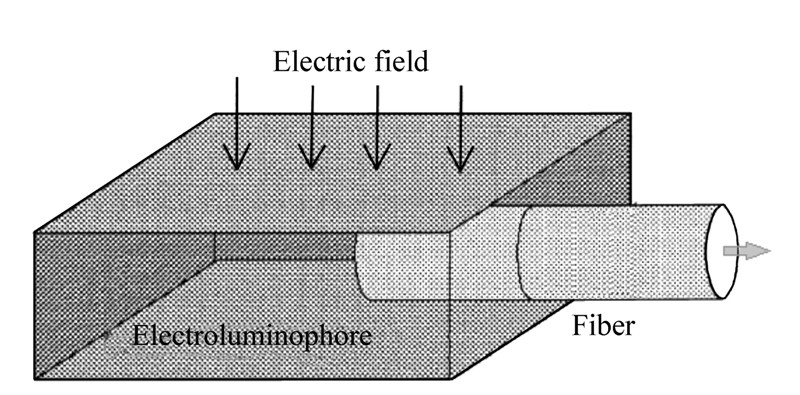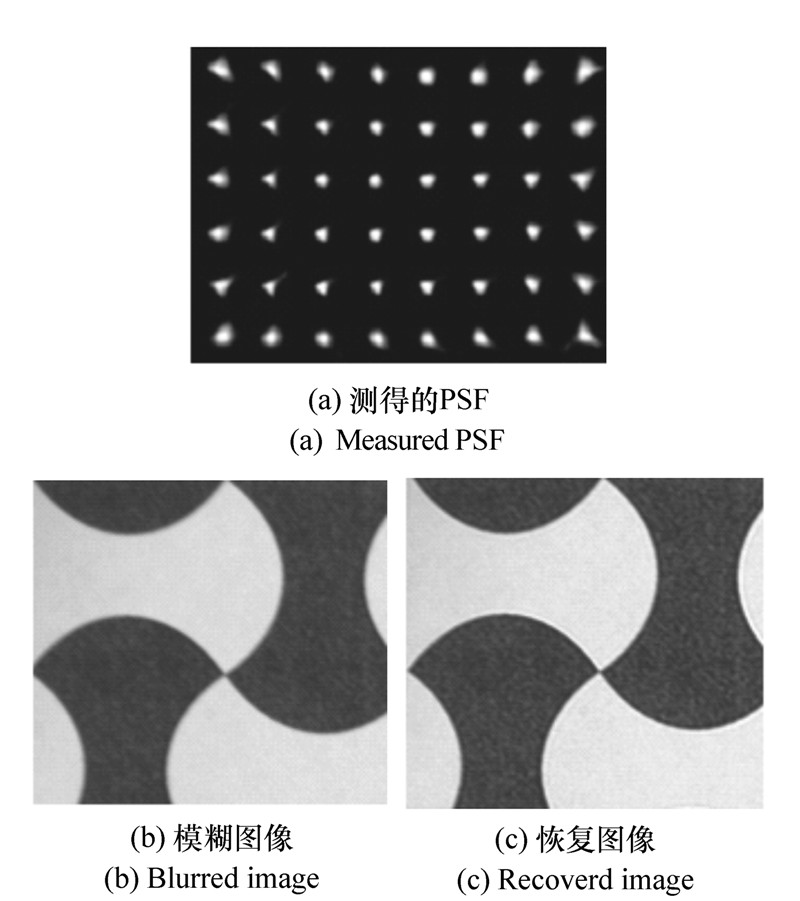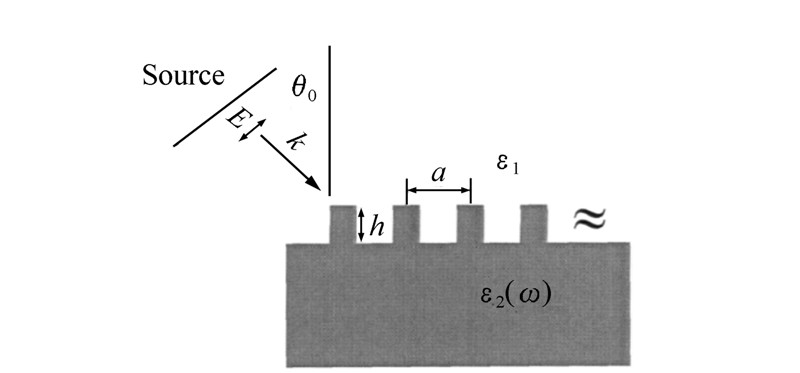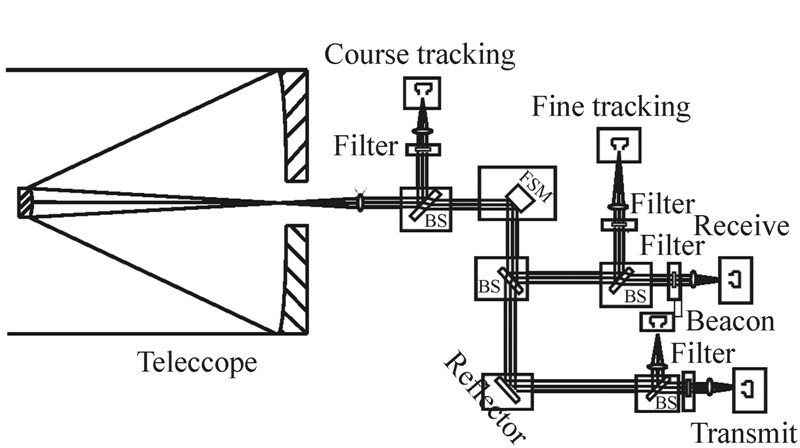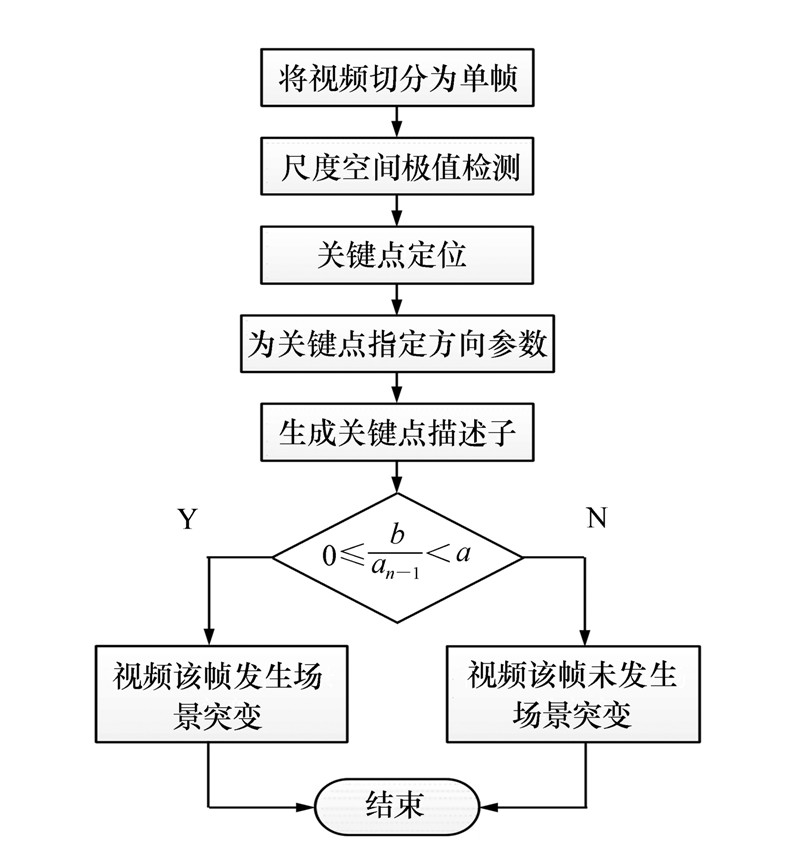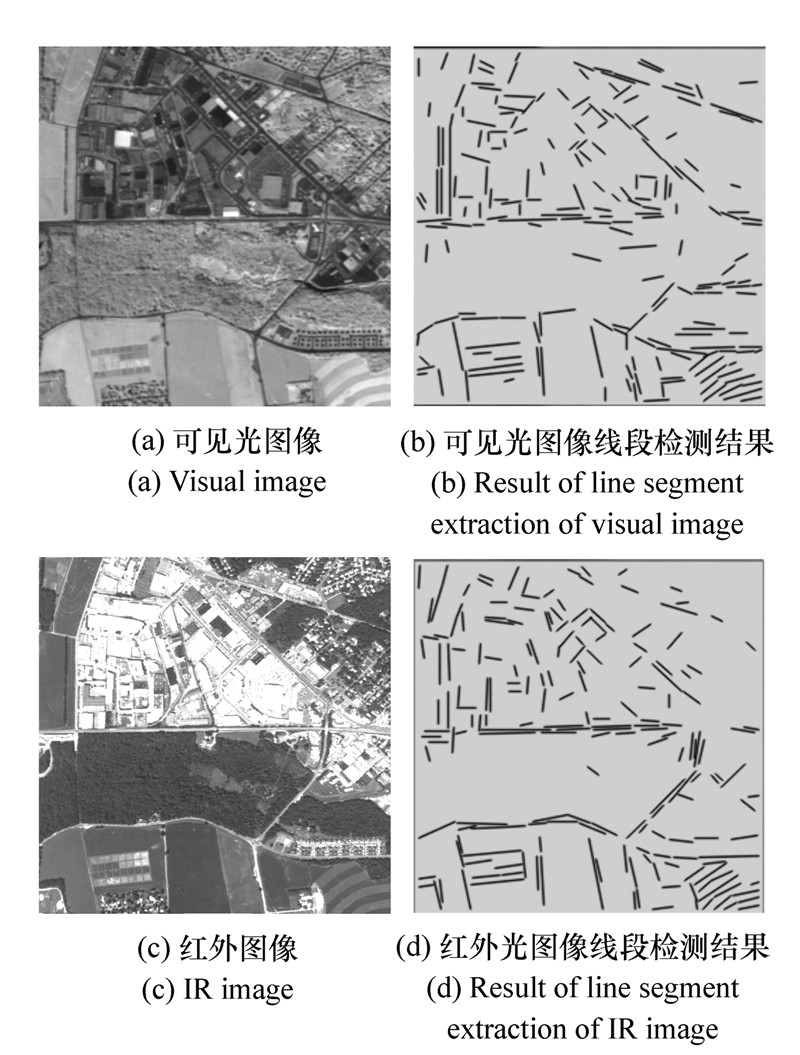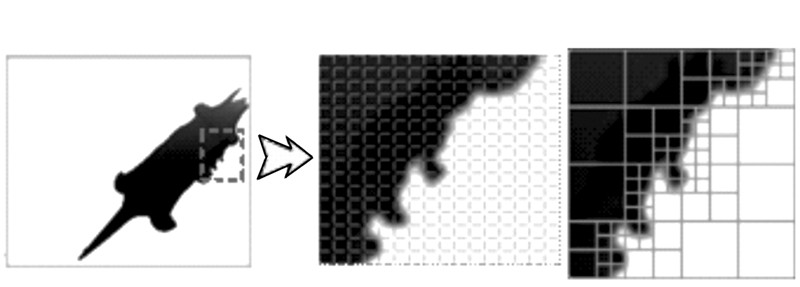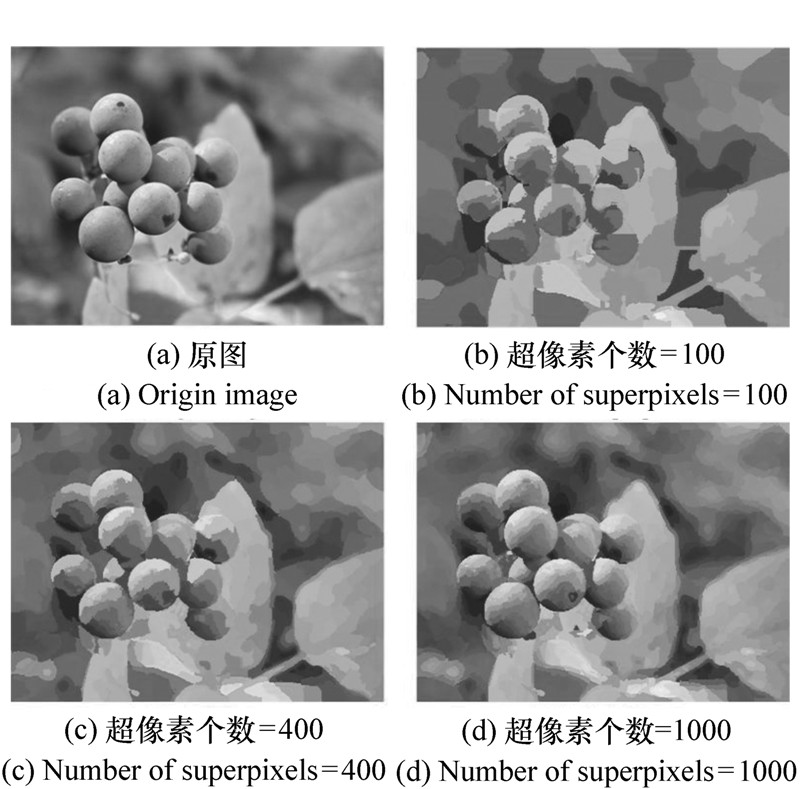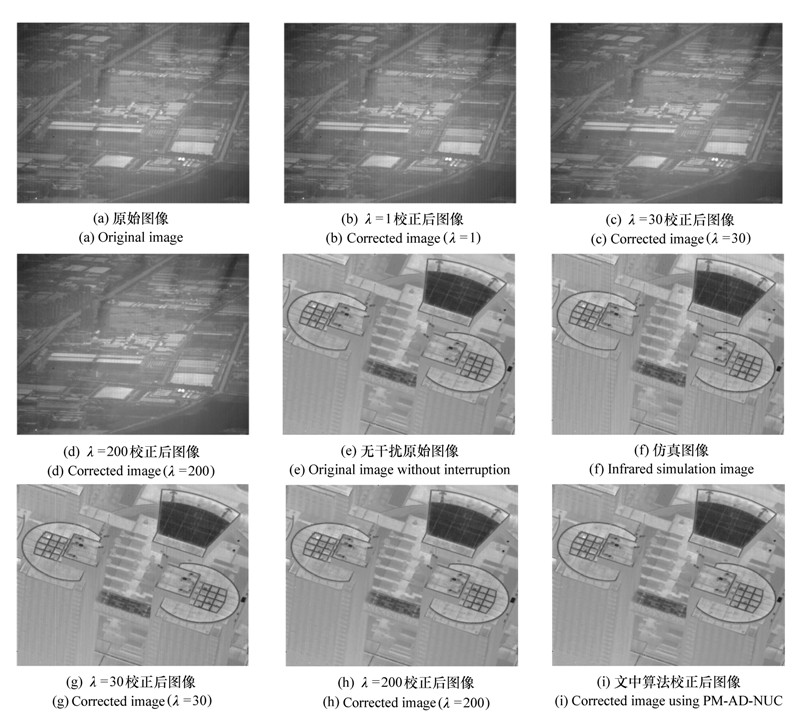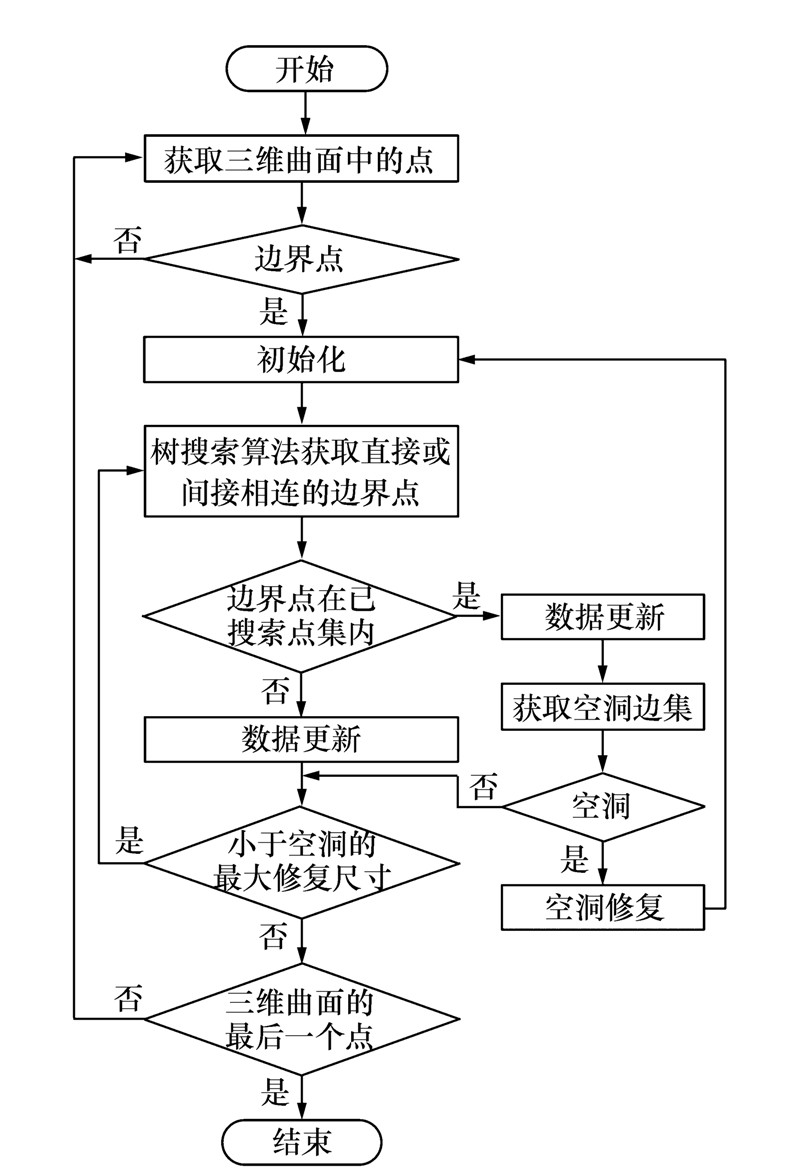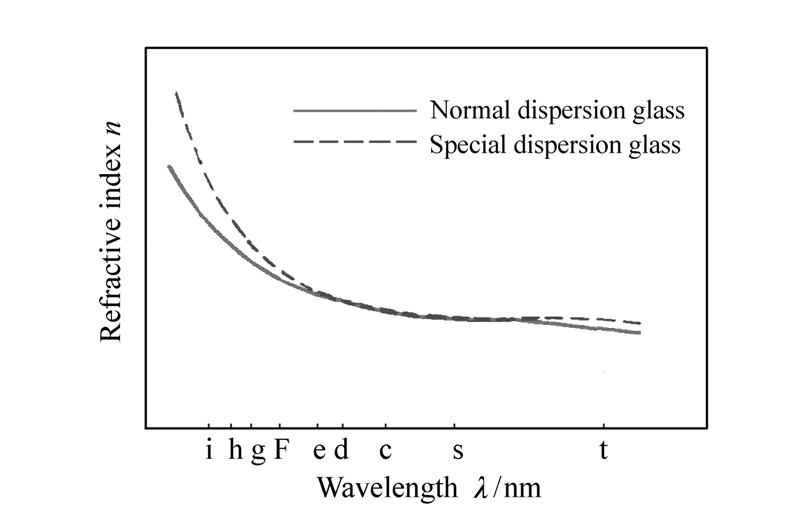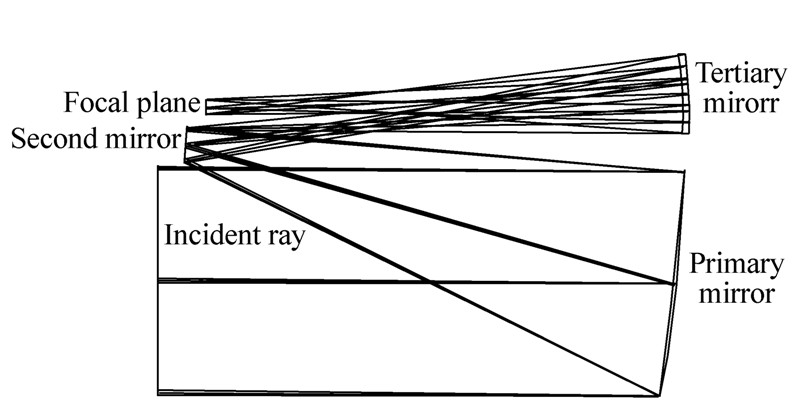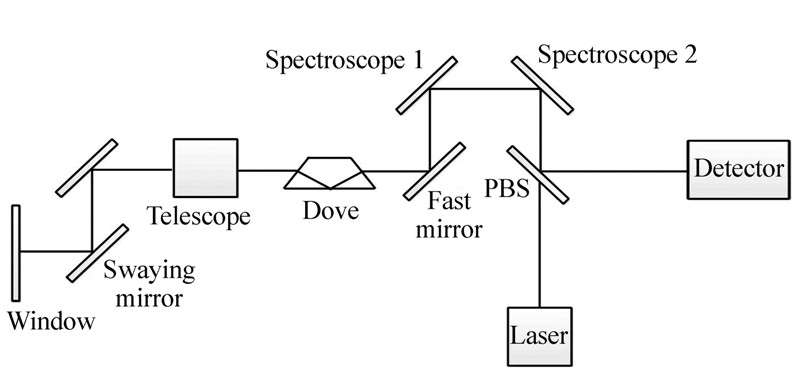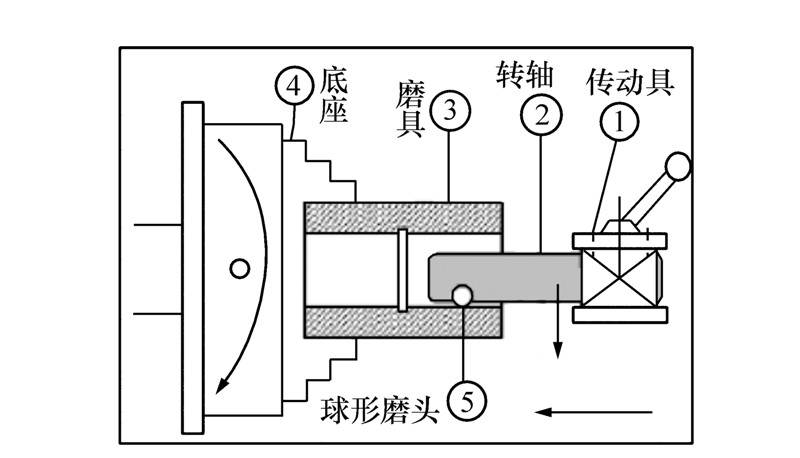2016 Vol. 9, No. 1
2016, 9(1): 1-15.
doi: 10.3788/CO.20160901.0001
Abstract:
Photocatalysis has drawn much attention during past decades due to the potential applications in solving the current energy and environment crisis.The spectral response in wide range and high quantum efficiency are crucial to realize solar energy efficient conversion for photocatalytic materials.In the present work, we review briefly the recent progress of photocatalytic materials in responding to the UV, visible and near-infrared light.Some strategies to extend light response range and enhance the separation of charge carriers are illustrated.And challenges and prospects for further development in this field are presented.
Photocatalysis has drawn much attention during past decades due to the potential applications in solving the current energy and environment crisis.The spectral response in wide range and high quantum efficiency are crucial to realize solar energy efficient conversion for photocatalytic materials.In the present work, we review briefly the recent progress of photocatalytic materials in responding to the UV, visible and near-infrared light.Some strategies to extend light response range and enhance the separation of charge carriers are illustrated.And challenges and prospects for further development in this field are presented.
2016, 9(1): 16-29.
doi: 10.3788/CO.20160901.0016
Abstract:
In this paper, the research status and development tendency of star tracker technique are reviewed.Firstly, the development process of star tracker at home and abroad is summarized.Then, key techniques such as star centroid algorithm, star recognition algorithm and attitude determination algorithm are summarized respectively based on the working principle of star tracker.Based on the influence of star centroid localization precision on measurement precision of star tracker, the research status of star centroid localization algorithm and the corresponding error compensation are discussed.According to the constellation characteristics, character models and intelligent behavior, the star map recognition algorithm is introduced and the comparative analysis is developed.According to the determined attitude determination algorithm and dynamic attitude determination algorithm, the research status of attitude determination algorithm is discussed.Finally, the future development of star tracker is prospected, and the development trend and key research contents in the future of airborne star tracker, micro star tracker and super high precision star tracker are discussed.
In this paper, the research status and development tendency of star tracker technique are reviewed.Firstly, the development process of star tracker at home and abroad is summarized.Then, key techniques such as star centroid algorithm, star recognition algorithm and attitude determination algorithm are summarized respectively based on the working principle of star tracker.Based on the influence of star centroid localization precision on measurement precision of star tracker, the research status of star centroid localization algorithm and the corresponding error compensation are discussed.According to the constellation characteristics, character models and intelligent behavior, the star map recognition algorithm is introduced and the comparative analysis is developed.According to the determined attitude determination algorithm and dynamic attitude determination algorithm, the research status of attitude determination algorithm is discussed.Finally, the future development of star tracker is prospected, and the development trend and key research contents in the future of airborne star tracker, micro star tracker and super high precision star tracker are discussed.
2016, 9(1): 30-40.
doi: 10.3788/CO.20160901.0030
Abstract:
Sensing principle, classification, and main properties of the optical voltage sensor based on electroluminescent effect are reviewed and summarized.Current research status and important problems to be solved for this type of voltage sensor are analyzed, and some future research topics are also proposed.The electroluminescent voltage sensor is no need of interrogation light source thus it is free from sensing performance degradation caused by the unstable light source.Additionally, it has simple configuration, small size, low weight, and low cost, and thus it is easy to achieve higher cost performance.Future research topics mainly include how to properly select the voltage sensing materials and devices, how to improve temperature and humidity stabilities of the voltage sensor, etc.This type of voltage sensor has potential application to scientific research and experiment in the fields of electric power industry, aviation, and spacecraft, etc.
Sensing principle, classification, and main properties of the optical voltage sensor based on electroluminescent effect are reviewed and summarized.Current research status and important problems to be solved for this type of voltage sensor are analyzed, and some future research topics are also proposed.The electroluminescent voltage sensor is no need of interrogation light source thus it is free from sensing performance degradation caused by the unstable light source.Additionally, it has simple configuration, small size, low weight, and low cost, and thus it is easy to achieve higher cost performance.Future research topics mainly include how to properly select the voltage sensing materials and devices, how to improve temperature and humidity stabilities of the voltage sensor, etc.This type of voltage sensor has potential application to scientific research and experiment in the fields of electric power industry, aviation, and spacecraft, etc.
2016, 9(1): 41-50.
doi: 10.3788/CO.20160901.0041
Abstract:
Traditional image restoration is generally considered that point spread function(PSF) is space-invariant.However, the actual optical system suffering from various optical aberrations can not be strictly linear space invariant.Non-blind deconvolution(NBD) algorithm of image restoration based on spatially-varying PSF(SVPSF) gradually embodies its superiority.NBD image restoration with SVPSF accurately estimates the spatially-varying PSF of the image at first, and then restores the image through NBD algorithm, which is conducive to the recovery of high quality images.From the perspective of algorithm, we review non-blind image restoration method proposed in recent years based on spatially-varying PSF, as well as compare merits and drawbacks among NBD algorithm based on PSF estimation using sharp edge prediction, NBD algorithm based on blurred/noisy image pairs, and so on.These algorithms reflect pros and cons respectively in PSF estimation accuracy, inhibitory effect of ringing artifacts, and the scope of application.The study of the NBD image restoration method based on SVPSF is beneficial to the development of image restoration technology to a higher level, which facilitates the optical systems to be smaller, so that it can play an important role in many scientific fields.
Traditional image restoration is generally considered that point spread function(PSF) is space-invariant.However, the actual optical system suffering from various optical aberrations can not be strictly linear space invariant.Non-blind deconvolution(NBD) algorithm of image restoration based on spatially-varying PSF(SVPSF) gradually embodies its superiority.NBD image restoration with SVPSF accurately estimates the spatially-varying PSF of the image at first, and then restores the image through NBD algorithm, which is conducive to the recovery of high quality images.From the perspective of algorithm, we review non-blind image restoration method proposed in recent years based on spatially-varying PSF, as well as compare merits and drawbacks among NBD algorithm based on PSF estimation using sharp edge prediction, NBD algorithm based on blurred/noisy image pairs, and so on.These algorithms reflect pros and cons respectively in PSF estimation accuracy, inhibitory effect of ringing artifacts, and the scope of application.The study of the NBD image restoration method based on SVPSF is beneficial to the development of image restoration technology to a higher level, which facilitates the optical systems to be smaller, so that it can play an important role in many scientific fields.
2016, 9(1): 51-64.
doi: 10.3788/CO.20160901.0051
Abstract:
The basic theory, structure and performance of surface emitting distributed feedback semiconductor lasers(SE-DFB-LD) were demonstrated and described in this paper, and the present situation of research and development at home and abroad was summrred and reviewed.Based on all of these, the further research and development trend were discussed and prospected.With the consecutive optimization and enhancement of performance and the advancement of late machining and alignment technology, SE-DFB-LD will fulfill the requirement for scientific research and practical applications and has great development potential and capacity in industry and military, etc.
The basic theory, structure and performance of surface emitting distributed feedback semiconductor lasers(SE-DFB-LD) were demonstrated and described in this paper, and the present situation of research and development at home and abroad was summrred and reviewed.Based on all of these, the further research and development trend were discussed and prospected.With the consecutive optimization and enhancement of performance and the advancement of late machining and alignment technology, SE-DFB-LD will fulfill the requirement for scientific research and practical applications and has great development potential and capacity in industry and military, etc.
2016, 9(1): 65-73.
doi: 10.3788/CO.20160901.0065
Abstract:
In this paper, the significant results and important role of laser communication is introduced firstly, and the advantage and importance of airborne laser communication are explained.Then, the principle of airborne laser communication is presented, and the possibility of research on airborne laser communication is clarified.Following this, the development history and research status of airborne laser communication are discussed, and the performance and technology specifications are focused on.Based on the discussion, the enabling technology of airborne laser communication are analyzed, and its application prospect and developing trend are pointed out.In the near future, airborne laser communication will be an essential communication method for information warfare.
In this paper, the significant results and important role of laser communication is introduced firstly, and the advantage and importance of airborne laser communication are explained.Then, the principle of airborne laser communication is presented, and the possibility of research on airborne laser communication is clarified.Following this, the development history and research status of airborne laser communication are discussed, and the performance and technology specifications are focused on.Based on the discussion, the enabling technology of airborne laser communication are analyzed, and its application prospect and developing trend are pointed out.In the near future, airborne laser communication will be an essential communication method for information warfare.
2016, 9(1): 74-80.
doi: 10.3788/CO.20160901.0074
Abstract:
Video scene change detection has a very important role for video annotation and semantic search.This paper proposes a scene mutation change detection algorithm combined with SIFT(Scale Invariant Feature Transformation) feature point extraction.Firstly, the feature points of two adjacent video frames are extracted respectively using SIFT algorithm and the number of them is counted respectively.Then image matching of the two adjacent frames of the video is performed and the number of matching feature points is counted.Finally, the ratio between the number of matching feature points of the current frame and the number of matching feature points of its previous frame is calculated, so as to judge the scene change by this ratio.The average scene mutation change detection rate in the experimental results can reach 95.79%.The proposed algorithm can judge scene change during image matching.Therefore, the algorithm can not only be applied widely, but also guarantee the accuracy of scene change detection.Experimental results show the effectiveness of the proposed algorithm.
Video scene change detection has a very important role for video annotation and semantic search.This paper proposes a scene mutation change detection algorithm combined with SIFT(Scale Invariant Feature Transformation) feature point extraction.Firstly, the feature points of two adjacent video frames are extracted respectively using SIFT algorithm and the number of them is counted respectively.Then image matching of the two adjacent frames of the video is performed and the number of matching feature points is counted.Finally, the ratio between the number of matching feature points of the current frame and the number of matching feature points of its previous frame is calculated, so as to judge the scene change by this ratio.The average scene mutation change detection rate in the experimental results can reach 95.79%.The proposed algorithm can judge scene change during image matching.Therefore, the algorithm can not only be applied widely, but also guarantee the accuracy of scene change detection.Experimental results show the effectiveness of the proposed algorithm.
2016, 9(1): 81-88.
doi: 10.3788/CO.20160901.0081
Abstract:
In order to provide a robust multi-sensor image matching algorithm to satisfy the scale and rotation invariance, we put forward a new matching method based on key line segment pairs, inspired by the visual system in which most of the information of image is contained in sketch.Firstly, the line segments that can express the feature of image are found and screened out.Then, the characteristic of line segment pairs is constructed by using the information and the relative position of line segments.And initial matching is carried out by the similarity between line segment pairs of two images.Finally, the topological relationship between line segments is used to achieve accurate registration.Experiment results tested by multi-sensor images show that the accuracy of image matching by using this proposed algorithm is more than 75% and the computing time is about 1/5 of traditional algorithm which satisfies the requirement of real-time and veracity in the multi-sensor image matching.
In order to provide a robust multi-sensor image matching algorithm to satisfy the scale and rotation invariance, we put forward a new matching method based on key line segment pairs, inspired by the visual system in which most of the information of image is contained in sketch.Firstly, the line segments that can express the feature of image are found and screened out.Then, the characteristic of line segment pairs is constructed by using the information and the relative position of line segments.And initial matching is carried out by the similarity between line segment pairs of two images.Finally, the topological relationship between line segments is used to achieve accurate registration.Experiment results tested by multi-sensor images show that the accuracy of image matching by using this proposed algorithm is more than 75% and the computing time is about 1/5 of traditional algorithm which satisfies the requirement of real-time and veracity in the multi-sensor image matching.
2016, 9(1): 89-96.
doi: 10.3788/CO.20160901.0089
Abstract:
In order to reduce the aliasing artifact due to the finite resolution of shadow mapping in real-time rendering, we propose a hybrid-resolution shadow map based on a parallel line-sweep algorithm.First, our method generates a high-resolution depth map from light's view, and analysizes the mean difference of depth using parallel line-sweep algorithm with threads and kernels.Then this method merges the texels from bottom to top to establish indexes for the texels and discusses the storage methods.At rendering pass, our method renders shadows in real time using the hybrid-resolution shadow map for occluder detection.Experimental results indicate that our algorithm improves the resolution of boundaries' area over 20% compared with standard shadow mapping and reduces the time consumption about 9%-18% running by Dragon model.Verified by practical application, the hybrid-resolution shadow mapping is an effective real-time shadow rendering algorithm, which can effectively reduce the aliasing artifact.
In order to reduce the aliasing artifact due to the finite resolution of shadow mapping in real-time rendering, we propose a hybrid-resolution shadow map based on a parallel line-sweep algorithm.First, our method generates a high-resolution depth map from light's view, and analysizes the mean difference of depth using parallel line-sweep algorithm with threads and kernels.Then this method merges the texels from bottom to top to establish indexes for the texels and discusses the storage methods.At rendering pass, our method renders shadows in real time using the hybrid-resolution shadow map for occluder detection.Experimental results indicate that our algorithm improves the resolution of boundaries' area over 20% compared with standard shadow mapping and reduces the time consumption about 9%-18% running by Dragon model.Verified by practical application, the hybrid-resolution shadow mapping is an effective real-time shadow rendering algorithm, which can effectively reduce the aliasing artifact.
2016, 9(1): 97-105.
doi: 10.3788/CO.20160901.0097
Abstract:
A novel visual saliency computing model is proposed based on multi-scale region contrast to perform more accurate detection on salient object.Firstly, the image is divided into different number of super-pixels based on multi-scale method, and the values of pixels in every super-pixel are averaged to create abstract image.Secondly, based on scarcity and aggregation, both of which are the characters of saliency, the color's saliency of super-pixel is computed in single scale.By averaging the salient images in every scale, the multi-scale salient images are fused and the final visual salient image is obtained in the end.The simulation result shows that with 1000 random nature images in the MSRA Libraries, the model improves the precision ratio of salient object detection by 14.8% and F-Measure value by 9.2%, compared with current well-performed region contrast model.The model improves the adaptability of the size of salient objects, and reduces the disturbance of background.It performs better consistency and has better ability to recognize salient object in comparison with current algorithms.
A novel visual saliency computing model is proposed based on multi-scale region contrast to perform more accurate detection on salient object.Firstly, the image is divided into different number of super-pixels based on multi-scale method, and the values of pixels in every super-pixel are averaged to create abstract image.Secondly, based on scarcity and aggregation, both of which are the characters of saliency, the color's saliency of super-pixel is computed in single scale.By averaging the salient images in every scale, the multi-scale salient images are fused and the final visual salient image is obtained in the end.The simulation result shows that with 1000 random nature images in the MSRA Libraries, the model improves the precision ratio of salient object detection by 14.8% and F-Measure value by 9.2%, compared with current well-performed region contrast model.The model improves the adaptability of the size of salient objects, and reduces the disturbance of background.It performs better consistency and has better ability to recognize salient object in comparison with current algorithms.
2016, 9(1): 106-113.
doi: 10.3788/CO.20160901.0106
Abstract:
In order to correct the stripe nonuniformity for infrared images captured by infraed focal plane array(IRFPA), a novel stripe nonuniformity correction algorithm based on adaptive PM diffusion models for single infrared image is adopted.Firstly, the adaptive diffusion threshold of PM model is calculated by gradient information and local gray level statistics of infrared images.Then, the estimate values of each column pixel are treated as expectations, which are in constraint of PM models.Finally, correction parameters in iteration are obtained by method of steepest descent, and the image is corrected repeatedly to improve correction performance.Experimental results indicate that the adopted algorithm can preserve edge information.Compared with other four algorithms, the proposed algorithm has advantage of reducing stripe nonuniformity and removing ghosting artifact.
In order to correct the stripe nonuniformity for infrared images captured by infraed focal plane array(IRFPA), a novel stripe nonuniformity correction algorithm based on adaptive PM diffusion models for single infrared image is adopted.Firstly, the adaptive diffusion threshold of PM model is calculated by gradient information and local gray level statistics of infrared images.Then, the estimate values of each column pixel are treated as expectations, which are in constraint of PM models.Finally, correction parameters in iteration are obtained by method of steepest descent, and the image is corrected repeatedly to improve correction performance.Experimental results indicate that the adopted algorithm can preserve edge information.Compared with other four algorithms, the proposed algorithm has advantage of reducing stripe nonuniformity and removing ghosting artifact.
2016, 9(1): 114-121.
doi: 10.3788/CO.20160901.0114
Abstract:
To solve the hole-problem of the reconstructed surface in three dimensional laser scanning system, the hole-recognition and repair method based on the Floyd shortest path selection algorithm is proposed.We process one by one all the boundary points of the three dimensional surface which might constitute a hole, and adopt the tree search algorithm to obtain the boundary points, which are directly or indirectly connected to the processed point, and use them as the routing nodes, then the boundary sides which are connected with the nodes are used as the routing sides, and we set the length of the boundary sides according to the search level of the nodes.When the newly searched boundary point overlap with the already searched points, we firstly process the distance matrix and the routing matrix to find the hole endpoint by the Floyd algorithm, and then make use of the repeated point and the hole endpoint to generate the hole boundary sides set.Finally, we deal with the hole boundary sides set using the wave front method.The experimental results show that the proposed method can accurately identify the special hole-structures, such as a hole connected with an isolated boundary side and two adjacent holes, and has better versatility and robustness compared with the traditional method.Compared with two traditional methods, the number of the repaired holes has been increased by 54.1% and 21.3%, respectively.
To solve the hole-problem of the reconstructed surface in three dimensional laser scanning system, the hole-recognition and repair method based on the Floyd shortest path selection algorithm is proposed.We process one by one all the boundary points of the three dimensional surface which might constitute a hole, and adopt the tree search algorithm to obtain the boundary points, which are directly or indirectly connected to the processed point, and use them as the routing nodes, then the boundary sides which are connected with the nodes are used as the routing sides, and we set the length of the boundary sides according to the search level of the nodes.When the newly searched boundary point overlap with the already searched points, we firstly process the distance matrix and the routing matrix to find the hole endpoint by the Floyd algorithm, and then make use of the repeated point and the hole endpoint to generate the hole boundary sides set.Finally, we deal with the hole boundary sides set using the wave front method.The experimental results show that the proposed method can accurately identify the special hole-structures, such as a hole connected with an isolated boundary side and two adjacent holes, and has better versatility and robustness compared with the traditional method.Compared with two traditional methods, the number of the repaired holes has been increased by 54.1% and 21.3%, respectively.
2016, 9(1): 122-129.
doi: 10.3788/CO.20160901.0122
Abstract:
Special dispersion mechanism of optical glass is studied deeply in ths paper.The deviation of relative partial dispersion ΔPg, F from normal line is an important parameter to characterize the special dispersion property of optical glass.The optical glass with high absolute value of ΔPg, F can be used to revise secondary spectrum in advanced optical system.The special dispersion phenomenon in visible region is aroused by inherent absorption in the ultraviolet and infrared regions.The shift and strength of inherent absorption peaks have an evident influence on the slope of dispersion curve, which will change the deviation of relative partial dispersion.It is generally thought that the electron transition results in ultraviolet inherent absorption, and libration of molecule or its group leads to infrared inherent absorption.Special dispersion mechanism is studied not only to deeply understand the relationship among composition, microstructure and property of optical glass, but also to develop new optical glasses with more excellent special dispersion property.
Special dispersion mechanism of optical glass is studied deeply in ths paper.The deviation of relative partial dispersion ΔPg, F from normal line is an important parameter to characterize the special dispersion property of optical glass.The optical glass with high absolute value of ΔPg, F can be used to revise secondary spectrum in advanced optical system.The special dispersion phenomenon in visible region is aroused by inherent absorption in the ultraviolet and infrared regions.The shift and strength of inherent absorption peaks have an evident influence on the slope of dispersion curve, which will change the deviation of relative partial dispersion.It is generally thought that the electron transition results in ultraviolet inherent absorption, and libration of molecule or its group leads to infrared inherent absorption.Special dispersion mechanism is studied not only to deeply understand the relationship among composition, microstructure and property of optical glass, but also to develop new optical glasses with more excellent special dispersion property.
2016, 9(1): 130-136.
doi: 10.3788/CO.20160901.0130
Abstract:
In order to overcome the difficulty of testing large off-axis convex asphere, the convex asphere systemic stitching testing method combining with wave aberration testing and subaperture stitching interferometry(SSI) is proposed.The basic principle and flow chart of this method are analyzed and researched, and the stitching mathematical model is established.When the primary mirror and second mirror of the three mirror astigmatism(TMA) system have been fabricated, we align and calibrate the optical system, and test wave aberration of all the fields successively.Then we can obtain the phase map of the whole aperture by the synthetical optimization stitching algorithm and interpolation, which provides the guarantee of the subsequent fabrication and systemic testing.With engineering examples, a large convex mirror with the aperture of 287 mm×115 mm is tested by the method, and the value of RMS of the surface error is close to 1/30λ(λ=632.8 nm) after two cycles of fabricating and testing.
In order to overcome the difficulty of testing large off-axis convex asphere, the convex asphere systemic stitching testing method combining with wave aberration testing and subaperture stitching interferometry(SSI) is proposed.The basic principle and flow chart of this method are analyzed and researched, and the stitching mathematical model is established.When the primary mirror and second mirror of the three mirror astigmatism(TMA) system have been fabricated, we align and calibrate the optical system, and test wave aberration of all the fields successively.Then we can obtain the phase map of the whole aperture by the synthetical optimization stitching algorithm and interpolation, which provides the guarantee of the subsequent fabrication and systemic testing.With engineering examples, a large convex mirror with the aperture of 287 mm×115 mm is tested by the method, and the value of RMS of the surface error is close to 1/30λ(λ=632.8 nm) after two cycles of fabricating and testing.
2016, 9(1): 137-143.
doi: 10.3788/CO.20160901.0137
Abstract:
In order to avoid the polarization changes of the irradiation laser pulse, caused by the rotation of Dove prism in the co-aperture optical system of airborne electro-optical pod, the polarization properties of the Dove prism and the compensation of the polarization changes of laser pulse are theoretically analyzed by Jones matrix, and they were also experimentally verified.In the compensation of polarization, a quarter-wave plate and a half wave plate are used.The results show that, when the linearly polarized laser pulse passes through the Dove prism that rotated an angle, the polarization state of the laser pulse becomes elliptically polarized.Obviously, the polarization state has changed.Moreover, when the laser pulse passes through a quarter-wave plate and a half wave plate that rotated a certain angle firstly, the output laser pulse polarization states at Dove prism system remain unchanged, and there is a nonlinear relationship between the two wave plates' rotation angles and Dove prism's rotation angle.Therefore, this polarization compensation method can effectively avoid the laser pulse polarization change caused by Dove prism rotation in co-aperture optical system of airborne electro-optical pod.Consequently, the utilization of the laser pulse energy is improved and the difficulty of suppressing the backscattering of laser pulse is decreased.
In order to avoid the polarization changes of the irradiation laser pulse, caused by the rotation of Dove prism in the co-aperture optical system of airborne electro-optical pod, the polarization properties of the Dove prism and the compensation of the polarization changes of laser pulse are theoretically analyzed by Jones matrix, and they were also experimentally verified.In the compensation of polarization, a quarter-wave plate and a half wave plate are used.The results show that, when the linearly polarized laser pulse passes through the Dove prism that rotated an angle, the polarization state of the laser pulse becomes elliptically polarized.Obviously, the polarization state has changed.Moreover, when the laser pulse passes through a quarter-wave plate and a half wave plate that rotated a certain angle firstly, the output laser pulse polarization states at Dove prism system remain unchanged, and there is a nonlinear relationship between the two wave plates' rotation angles and Dove prism's rotation angle.Therefore, this polarization compensation method can effectively avoid the laser pulse polarization change caused by Dove prism rotation in co-aperture optical system of airborne electro-optical pod.Consequently, the utilization of the laser pulse energy is improved and the difficulty of suppressing the backscattering of laser pulse is decreased.
2016, 9(1): 144-154.
doi: 10.3788/CO.20160901.0144
Abstract:
To improve the detecting precision of the spectral-polarimetric modulator, a high accuracy alignment of the modulator is established.First, based on the modulation principle of the spectral-polarimetric modulator, a method of alignment using three pieces of thick birefringent retarder and an analyzer to correct the errors is proposed in this paper.Then, the corresponding mathematical model is established, and the thickness of the thick birefringent retarder for calibration is designed.Finally, the simulated demonstrations of system alignment and spectral-polarimetric imaging are also presented.The results show that the method is sensitive to the relative rotation angle errors between the polarization devices, which has the ability to realize the precise alignment of the spectral-polarimetric modulator.And the accuracy can reach 0.2°with the input calibration spectrum set in this paper.The method also keeps the advantage of the traditional method, which guarantees the resolution of the reconstructed Stokes parameters.The research provides theoretical reference for the precision alignment of spectral-polarimetric imaging system.
To improve the detecting precision of the spectral-polarimetric modulator, a high accuracy alignment of the modulator is established.First, based on the modulation principle of the spectral-polarimetric modulator, a method of alignment using three pieces of thick birefringent retarder and an analyzer to correct the errors is proposed in this paper.Then, the corresponding mathematical model is established, and the thickness of the thick birefringent retarder for calibration is designed.Finally, the simulated demonstrations of system alignment and spectral-polarimetric imaging are also presented.The results show that the method is sensitive to the relative rotation angle errors between the polarization devices, which has the ability to realize the precise alignment of the spectral-polarimetric modulator.And the accuracy can reach 0.2°with the input calibration spectrum set in this paper.The method also keeps the advantage of the traditional method, which guarantees the resolution of the reconstructed Stokes parameters.The research provides theoretical reference for the precision alignment of spectral-polarimetric imaging system.
2016, 9(1): 155-166.
doi: 10.3788/CO.20160901.0155
Abstract:
In order to improve the material removal rate and reduce the fabricating cycle of large aperture optical components, a new type of high-efficiency polishing method combined with self-rotation and co-rotation movement is proposed in this paper.The structure, working principle and removal characteristics are studied.First, the mechanical structure and working principle are introduced.According to the Hertz contact theory and Preston equation, the removal function is modeled, and the shape of the removal function of different rotational speed ratio is discussed.Then, according to the theoretical model, the removal function, process parameters and stability experiments are carried out to study the influence of process parameters such as the depth and speed on the removal result.Finally, the fabrication simulation of the 200 mm diameter SiC workpiece is carried out.The experimental results show that the removal rate of the body is 0.197 mm3/min and the diameter of removal region is 19.23 mm when the pressure depth is 2 mm and the rotation speed is 200 rpm, which is more efficient than the traditional CCOS Technology.After 3.7 hours of simulation polishing, the initial face shape of 200 mm SiC workpiece with 3.008λPV(Peak-to-valley) and 0.553λRMS(Root Mean Square) is improved to 0.065λPV, 0.005λRMS, and the convergence efficiency is 98.18%.
In order to improve the material removal rate and reduce the fabricating cycle of large aperture optical components, a new type of high-efficiency polishing method combined with self-rotation and co-rotation movement is proposed in this paper.The structure, working principle and removal characteristics are studied.First, the mechanical structure and working principle are introduced.According to the Hertz contact theory and Preston equation, the removal function is modeled, and the shape of the removal function of different rotational speed ratio is discussed.Then, according to the theoretical model, the removal function, process parameters and stability experiments are carried out to study the influence of process parameters such as the depth and speed on the removal result.Finally, the fabrication simulation of the 200 mm diameter SiC workpiece is carried out.The experimental results show that the removal rate of the body is 0.197 mm3/min and the diameter of removal region is 19.23 mm when the pressure depth is 2 mm and the rotation speed is 200 rpm, which is more efficient than the traditional CCOS Technology.After 3.7 hours of simulation polishing, the initial face shape of 200 mm SiC workpiece with 3.008λPV(Peak-to-valley) and 0.553λRMS(Root Mean Square) is improved to 0.065λPV, 0.005λRMS, and the convergence efficiency is 98.18%.


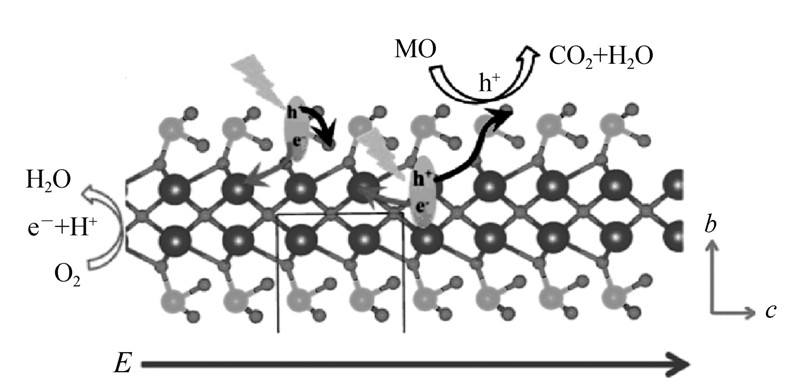
 Abstract
Abstract FullText HTML
FullText HTML PDF 1608KB
PDF 1608KB